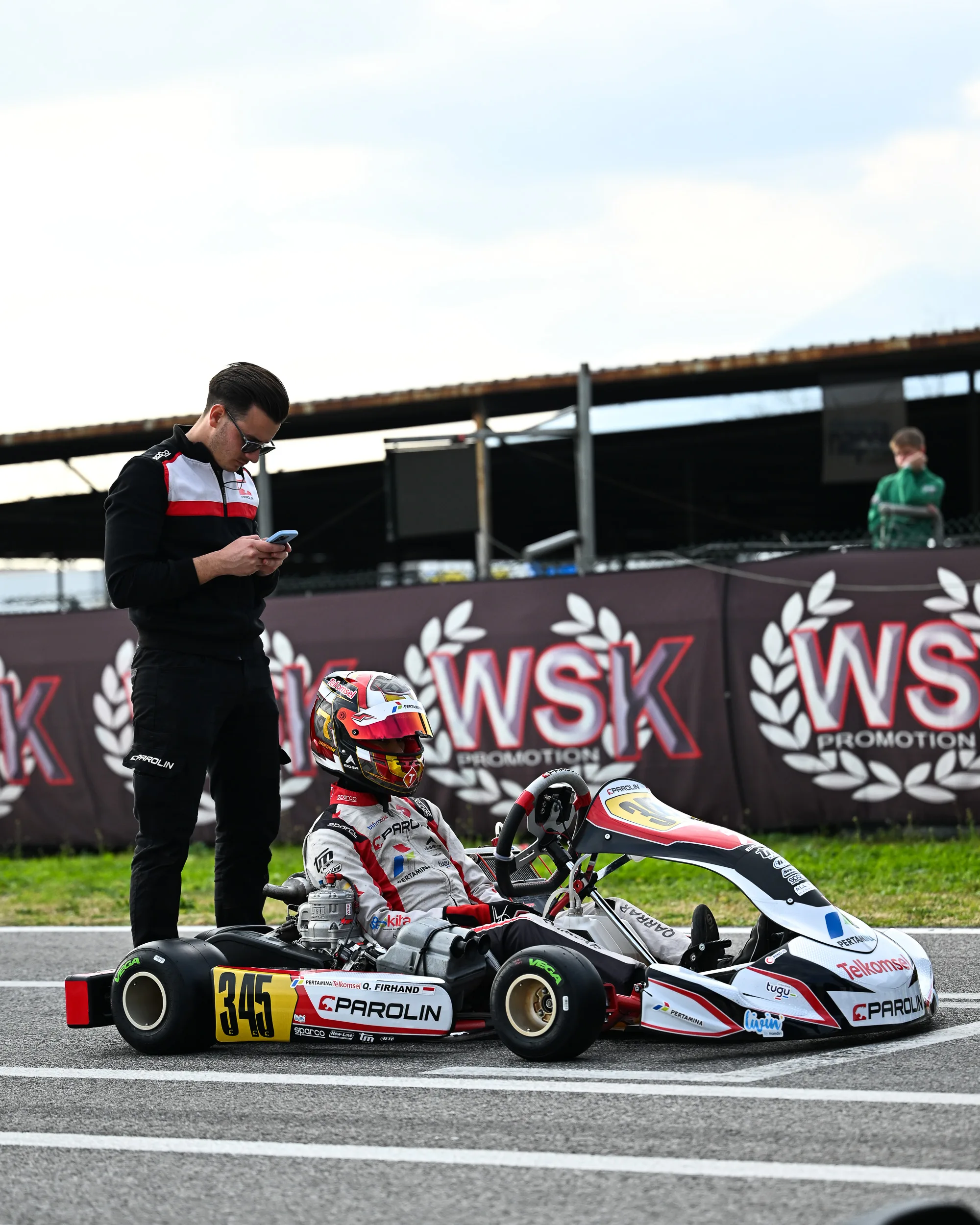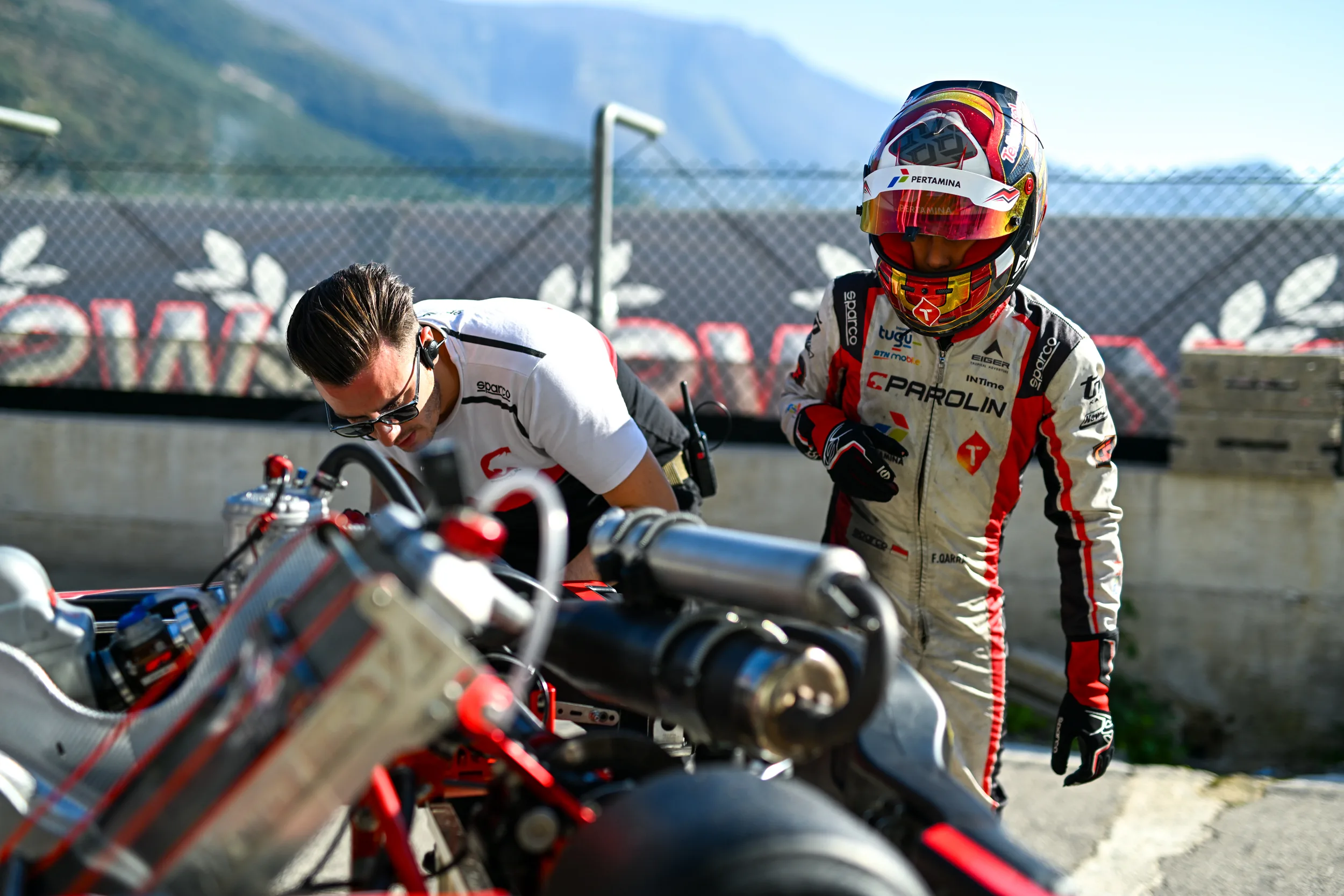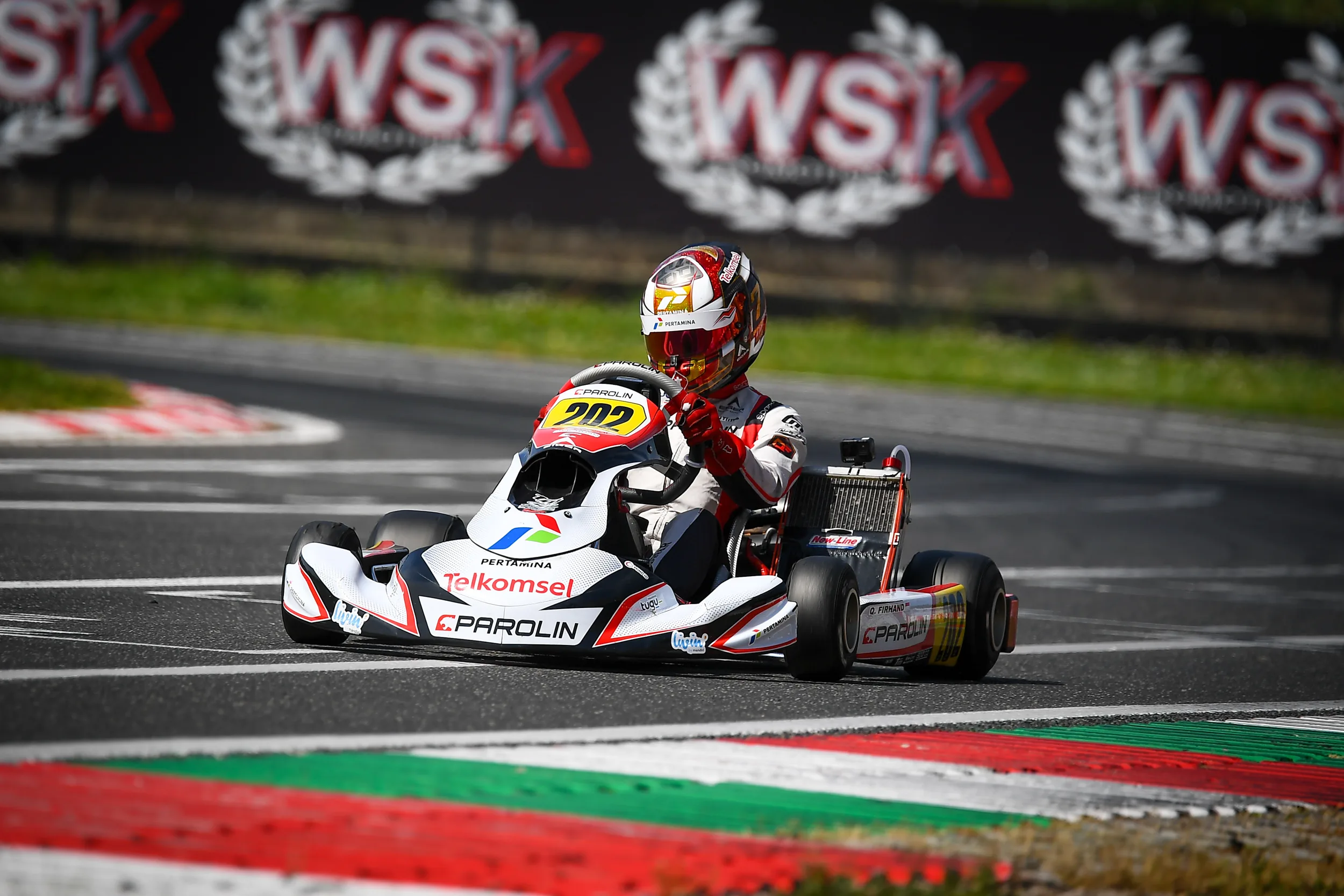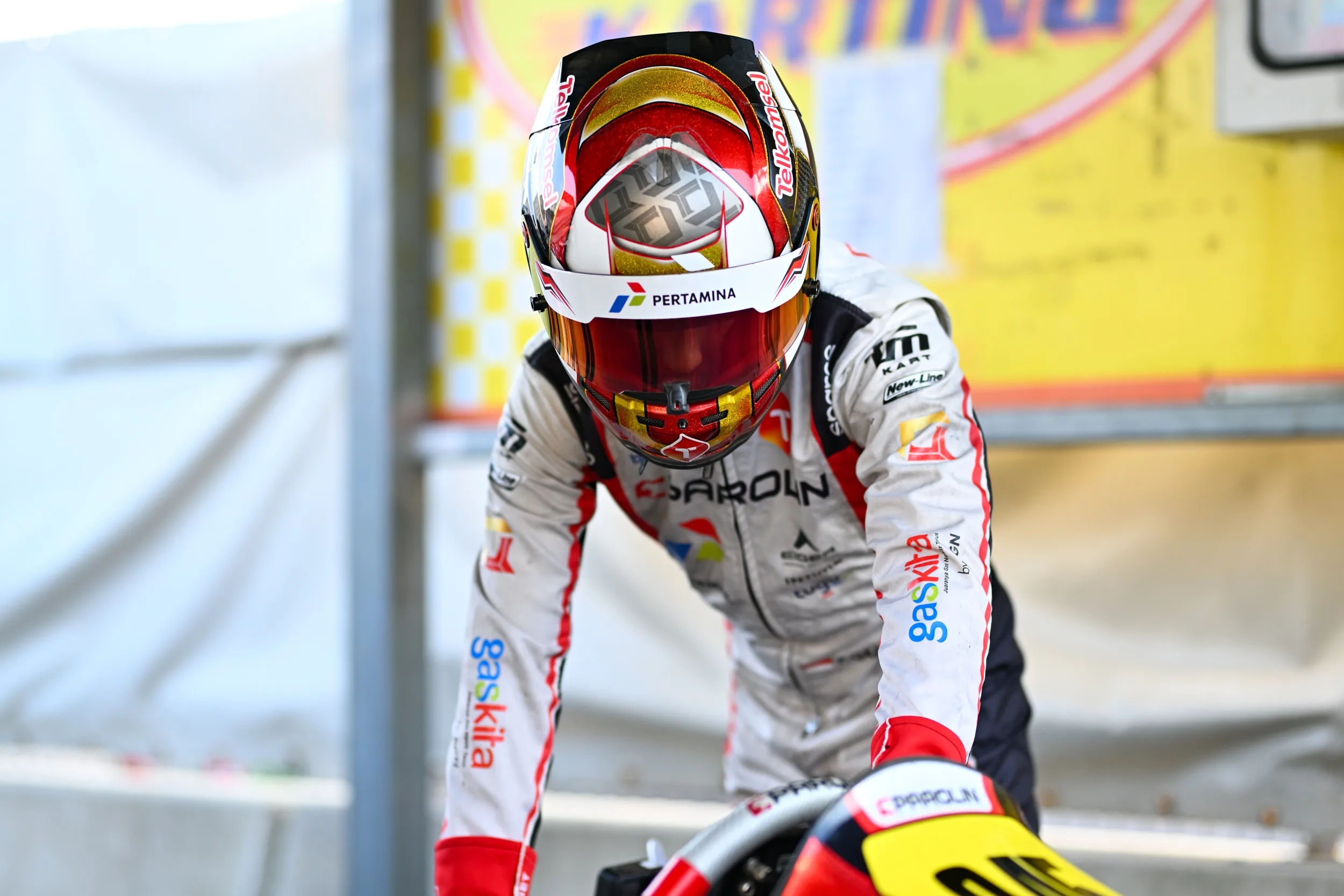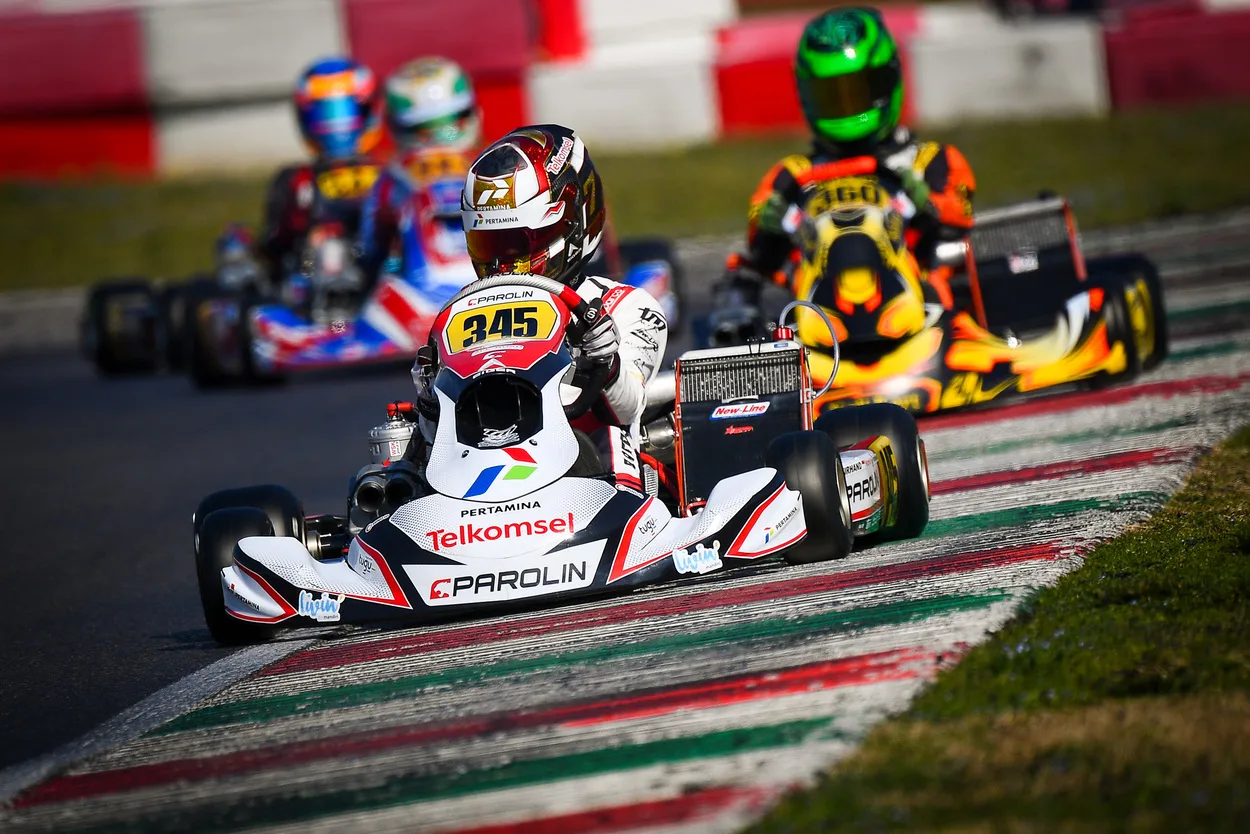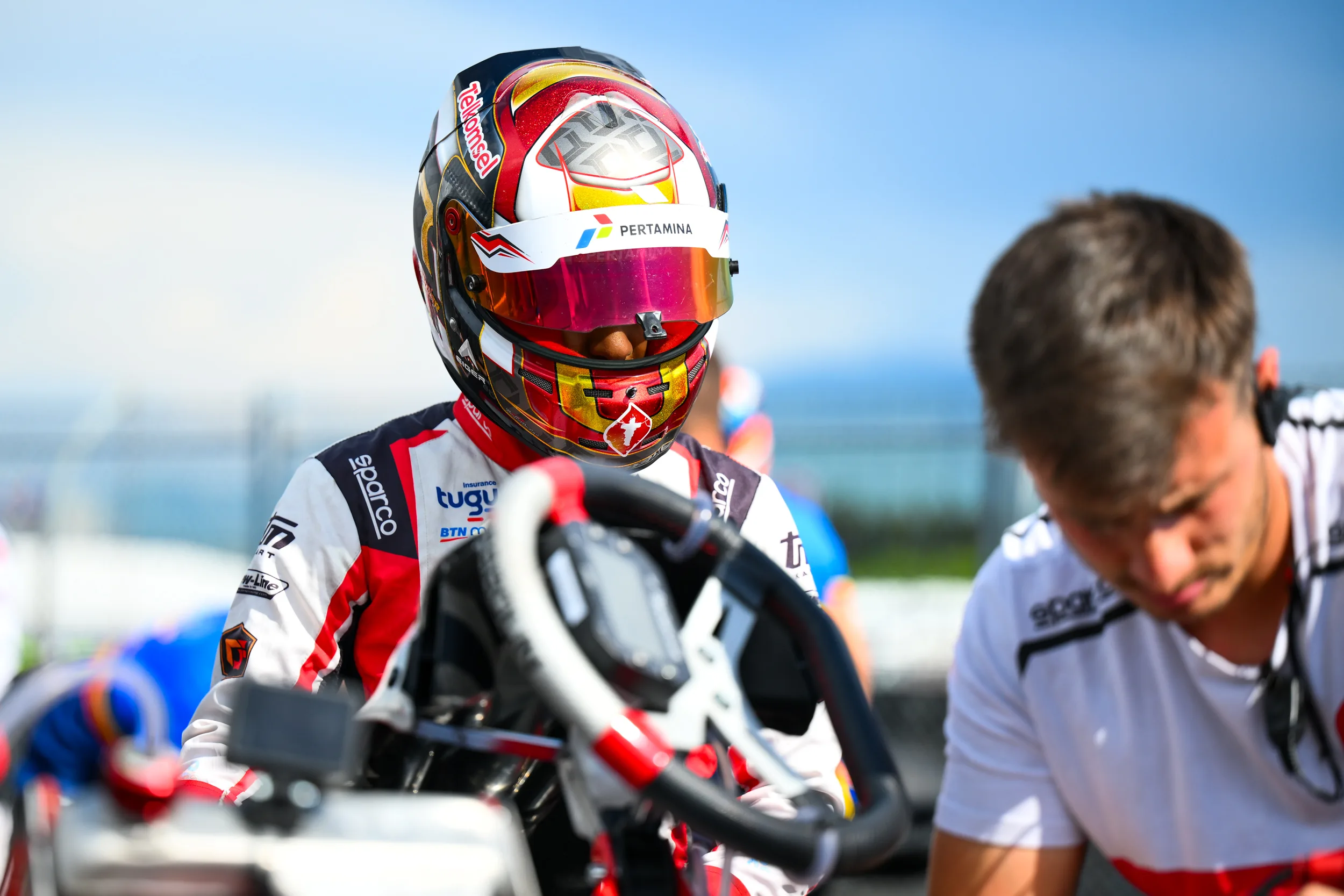At just 13 years old, Jakarta-born karting sensation Qarrar Firhand has already made a name for himself across three continents. His secret to success lies in his razor-sharp mindset, which transforms pressure into a driving force. Recently, he battled elite competitors at the FIA Karting World Championship with the poise of a veteran.
“The real race happens here first,” Qarrar says, tapping his helmet during pre-event interviews, highlighting the importance of mental toughness. His approach builds upon both innate talent and scientifically-backed conditioning methods, allowing him to maintain focus exercises during critical moments.
Understanding what’s behind speed is crucial for Qarrar Firhand’s continued success. By exploring his journey, we can gain insights into the psychological preparation that creates the foundation for racing excellence.
The Mental Battlefield of Modern Motorsport
The modern motorsport scene demands drivers to possess not only exceptional driving skills but also superior mental resilience. Motorsport has transformed into a high-pressure environment where athletes must navigate complex tracks, manage g-forces, and make tactical decisions in fractions of a second.
Split-Second Decisions at High Speeds
Drivers traveling at speeds exceeding 60 mph must react instinctively to changing conditions, rival maneuvers, and track hazards. This pressure cooker environment tests their psychological resilience and ability to maintain focus under extreme stress.
Where Mental Fortitude Becomes the Ultimate Accelerator
Research studies show that elite racers process critical information up to 30% faster under extreme stress compared to novices. This mental toughness enables them to gain a competitive edge, making it a crucial factor in achieving success in modern motorsport.
The Science Behind Racing Psychology
The science behind racing psychology reveals that neural pathways are strengthened through repetitive training, allowing drivers to react instinctively when tires screech and crowds roar during high-pressure race moments. Successful racers develop specialized mental conditioning techniques to transform the chaos of competition into structured decision-making processes.
By developing mental toughness, young competitors like Qarrar Firhand can gain a psychological advantage that compensates for differences in physical strength or experience. The roar of crowds and sensory overload of race day creates unique cognitive challenges that require specialized mental preparation techniques to maintain focus and performance.
Qarrar Firhand’s Journey: From Jakarta Streets to Global Circuits
Qarrar Firhand’s journey to becoming a global racing sensation began on the gritty circuits of Jakarta. His father, Firhand Ali, recognized his raw talent during weekend sessions at Jakarta’s local tracks.
Early Beginnings on Local Indonesian Tracks
Qarrar’s introduction to racing came at just five years old, with plastic toy cars being his first “vehicles.” However, it was when he gripped a real steering wheel that his passion ignited. Local tracks like the renowned Sentul karting facility served as his first classroom, teaching him to navigate tight corners and maintain focus under sweltering heat.
- Developed racing skills on challenging Indonesian karting circuits.
- Demonstrated exceptional focus and precision from a young age.
- Treating every lap like championship Sunday became his mantra.
First International Challenges at South Garda
At the age of 10, Qarrar faced his first international challenges at Italy’s prestigious South Garda Karting facility. The transition from Jakarta’s tropical climate to the cold, technical European circuits required Qarrar to adapt his skills.
Adapting Skills Across Different Racing Environments
Qarrar’s experience on local tracks prepared him for the global stage. He mastered slick surfaces by adapting his Jakarta-honed reflexes, shaving precious seconds off his lap times within months. This adaptability has been key to his success, transforming him into a versatile driver capable of competing on various international circuits.
Qarrar Firhand’s journey is a testament to his dedication and the support of his family. From local Indonesian tracks to global circuits, his story inspires young racing enthusiasts worldwide.
The High-Pressure Environment of Competitive Karting
The world of competitive karting demands more than just technical skill; it requires a unique blend of physical and mental prowess. Drivers must juggle g-forces, rival maneuvers, and changing conditions while maintaining millisecond precision.
Physical and Mental Demands of Modern Racing
Modern karting tracks, especially those in Europe, present a challenging environment where drivers face intense physical forces. The demanding nature of these tracks requires drivers to be in top physical condition, with the ability to process information quickly and make precise decisions.
| Physical Demands | Mental Demands |
|---|---|
| High g-forces | Rapid decision-making |
| Physical stamina | Processing information under stress |
| Reflexes and reaction time | Managing pressure and maintaining focus |
Processing Information 30% Faster Under Stress
Studies have shown that elite competitors can process critical information up to 30% faster under extreme stress than novice drivers. This ability is crucial in karting, where split-second decisions can be the difference between winning and losing.
The Millisecond Precision Required for Success
The smallest hesitation can cost valuable lap times and podium positions. Drivers must be trained to react quickly and make precise maneuvers, often under the pressure of screeching crowds and changing track conditions.
Behind every speed achievement lies a foundation of specialized training that prepares drivers for the sensory overload experienced when racing at the limit of adhesion. The tracks used for European podiumlatihan (training) focus on developing both physical stamina and mental resilience, creating complete athletes capable of maintaining peak performance throughout grueling race weekends.
Building Championship DNA: Qarrar’s Mental Preparation Routine
Qarrar Firhand’s approach to mental preparation is akin to a chess grandmaster’s strategic planning. His comprehensive routine is designed to prepare him for the challenges of major karting events.
Pre-Race Visualization Sessions
Each morning before a race, Qarrar spends 20 minutes visualizing every corner and potential rival move. “I see the track before I touch it,” he explains, highlighting the importance of mental preparation in his success.
Data-Driven Approaches to Mental Training
After a significant crash in 2022, Qarrar redesigned his mental preparation regimen. Now, he uses virtual reality headsets to simulate challenging conditions like hydroplaning and mechanical failures. This data-driven approach allows his team to track performance metrics during high-stress simulations, making precise adjustments to his preparation strategy.
| Mental Preparation Technique | Benefit | Outcome |
|---|---|---|
| Pre-race visualization | Improved reaction time | Better performance under pressure |
| Virtual reality simulations | Enhanced neural resilience | Increased confidence on the track |
| Data-driven training adjustments | Precise strategy formulation | Optimized race performance |
Transforming Pressure into Performance Fuel
Qarrar’s mental conditioning program transforms pre-race pressure into performance fuel. By systematically visualizing and focusing on the race, he builds unshakable self-belief. “When my visor drops, I know I’ve done the work,” Qarrar states, reflecting his trust in his preparation.
By incorporating cutting-edge technology and a data-driven approach, Qarrar Firhand has developed a mental preparation routine that gives him a competitive edge in major karting events.
Visualization Techniques: Creating Victory in the Mind First
Champions don’t just win on the track; they first win in their minds through rigorous visualization techniques! This concept, coined by sports psychologist Kay M. Porter as “mental blueprints,” is a game-changer in modern motorsports. By mentally rehearsing every turn, throttle adjustment, and braking point, racers like Qarrar Firhand build neural pathways that enable split-second decisions.
Building Neural Pathways
Qarrar’s visualization process starts with closing his eyes and reconstructing the circuit down to the smallest detail, including pavement cracks. He feels the steering wheel vibrations, hears the engine pitches shift during apex turns, and even tastes the track-side exhaust. This multi-sensory approach transforms abstract goals into tangible experiences, essentially programming muscle memory through imagination.
Multi-Sensory Visualization
The benefits of this technique are backed by research, showing that athletes who practice comprehensive visualization improve lap consistency by up to 18%. Qarrar credits his pre-race visualization for nailing a risky outside pass during Italy’s 2023 finals at South Garda. “I’d practiced that move 100 times in my head,” he recalls. “When the moment came, my hands just knew.”
Measurable Results
The impact of mental blueprint training is evident in Qarrar’s performance metrics, including faster and more consistent lap times. The table below highlights the benefits of visualization techniques:
| Technique | Benefit | Result |
|---|---|---|
| Multi-sensory visualization | Improved lap consistency | Up to 18% improvement |
| Mental rehearsal | Faster lap times | Enhanced performance metrics |
| Neural pathway building | Split-second decision making | Better racing outcomes |
By incorporating visualization techniques into his training regimen, Qarrar Firhand has taken his racing to the next level, demonstrating the power of mental preparation in achieving victory.
Breathing and Self-Talk: Invisible Weapons on the Track
In the high-pressure world of motorsport, the difference between victory and defeat often lies in the invisible weapons of breathing and self-talk. Elite drivers wield these tools to conquer chaos and transform adrenaline spikes into laser-guided precision.
Regulating Physiological Responses
Strategic breathing patterns help control heart rate and reduce stress hormones. Techniques like the 4-7-8 breathing method have been shown to slash stress hormones by up to 22%. Studies show that controlled breathing directly impacts tire grip sensitivity, allowing drivers to feel subtle changes in traction.
Boosting Confidence with Positive Self-Talk
Internal mantras become turbochargers for confidence, creating neural pathways that accelerate decision-making during critical moments. Drivers using cue-based self-talk have been shown to improve lap consistency by 14%.
Recovering from Mistakes
Recovery techniques after mistakes involve specific breathing and self-talk protocols, reducing recovery time from errors. Key benefits include:
- Reduced stress hormones through controlled breathing
- Improved lap consistency through positive self-talk
- Faster recovery times after mistakes
- Enhanced tire grip sensitivity
By mastering these invisible weapons, drivers can gain a competitive edge, improving lap times and consistency.
Learning Through Losses: Qarrar Firhand’s Reflections on Tough Races
The 2022 European Championship qualifier crash was a turning point for Qarrar Firhand, teaching him valuable lessons about resilience and performance. The incident, where his kart overturned and smoke billowed from the barriers, became a catalyst for growth rather than a setback.
The Crash That Changed Everything
During the 2022 European Championship qualifier, Qarrar Firhand was involved in a high-speed collision that left his kart overturned. “Crashes reveal your true racing DNA,” he later reflected, “They show what needs rebuilding—and what’s unbreakable.” This mindset allowed him to approach the incident as an opportunity for improvement.
Turning Setbacks into Performance Data
Qarrar’s team analyzed telemetry data from the crash, identifying a 0.3-second delay in steering correction. This forensic approach transformed a chaotic moment into actionable insights. By understanding what went wrong, they could develop targeted training to address these weaknesses.
Building Resilience Through Adversity
The experience led to the development of “controlled chaos” drills, simulating hydroplaning while hitting braking markers, and VR rain simulations with randomized traction loss. These tools helped shave 1.2 seconds off his wet-weather lap times at South Garda and other European circuits, demonstrating the effectiveness of Qarrar’s approach to learning from failure.
Qarrar Firhand’s story highlights the importance of resilience and adaptability in motorsports. As a young racer, he has shown that setbacks can be transformed into opportunities for growth, ultimately improving tire grip and seconds lap times.
- Qarrar Firhand’s growth as a young racer came through analyzing and learning from his toughest losses.
- His team conducted a forensic analysis of telemetry data, identifying a critical 0.3-second delay in steering correction.
- The implementation of “controlled chaos” training drills improved his wet-weather lap times at South Garda.
The Intersection of Technical Mastery and Mental Focus
The ultimate racing alchemy occurs when precision meets fierce concentration, as seen in Qarrar’s performances. This synergy is what sets champions apart from competitors.
Late-Braking Maneuvers: Precision and Courage Combined
Qarrar’s signature late-braking maneuvers demonstrate his unique blend of technical skill and psychological courage. By pushing limits until the last millisecond, he achieves remarkable lap gains.
Reading Track Conditions Under Extreme Pressure
Behind the wheel, Qarrar’s ability to read changing track conditions under extreme pressure is a testament to his technical knowledge and instinctive feeling working in harmony. The machine powers qarrar harnesses become extensions of his racing instinct.
The Fusion of Data Analysis and Instinctive Racing
Data analysis provides the foundation, but Qarrar’s ability to translate numbers into feeling when gripping the steering wheel represents the human element that separates champions from competitors. His kart behind speed achievements are a result of this fusion.
- The true magic in Qarrar’s racing happens where technical mastery meets unwavering mental focus.
- His late-braking maneuvers combine precise technical execution with psychological courage.
- Qarrar’s ability to read track conditions under pressure showcases his technical knowledge and instinctive feeling.
Qarrar’s success as a young racer on the track is a result of his powers qarrar track performances, which demonstrate his ability to synchronize technical understanding with instinctive reactions.
Balancing Racing Excellence with Academic Growth
Balancing the high-octane world of racing with the discipline of academics is Qarrar’s daily challenge. As a young racer with aspirations that span beyond the track, Qarrar Firhand embodies the modern athlete-scholar.
Precision in Every Minute
Qarrar’s day begins at 5 AM with a precision-crafted routine that treats time like a valuable resource. His mornings are filled with endurance circuits and simulator sessions that mirror real-track conditions, all while keeping up with his school assignments.
Synchronizing Demands
The coordination between Qarrar’s teachers and coaches is pivotal. They work together to sync exam periods with lighter training weeks, ensuring that neither his academic nor his racing performance suffers. “My team ensures neither speed nor grades get compromised,” Qarrar notes.
Classroom Discipline on the Track
The discipline Qarrar develops in the classroom directly translates to his track performance. The analytical thinking required for STEM subjects enhances his approach to data analysis and race strategy, making him a formidable competitor in international karting races, such as those held at Italy’s South Garda.
- Qarrar maintains a rigorous daily routine, starting at 5 AM, to balance his racing ambitions with academic responsibilities.
- His preparation before a race includes physical and mental training, as well as ensuring academic duties are fulfilled.
- Participation in international karting events requires meticulous planning, especially when balancing studies at Brescia International School.
- The discipline forged through his daily routine translates into unshakable focus during critical moments on the track.
Race Day Rituals: Unlocking Peak Performance When It Matters Most
With precision and focus, Qarrar Firhand transforms his pre-race rituals into a winning strategy. As dawn breaks over the Lombardy circuit, a meticulous dance of preparation unfolds in Qarrar’s garage. Team engineers fine-tune tire pressures while the young racer completes dynamic stretches, his eyes locked on telemetry screens.
At the 2023 Italian Junior ROK Cup, these precise adjustments shaved 0.8 seconds off lap times—the difference between podium glory and fourth place. Pre-race rituals blend science and instinct, with Qarrar initiating box breathing (4-7-8 counts) to steady his pulse below 60 BPM ninety minutes before lights out. Visualization sessions follow, mentally rehearsing every gear shift on South Garda’s notorious first corner.
The combination of Qarrar’s physical preparation, including dynamic stretching routines, and his mental preparation, such as box breathing techniques, creates a comprehensive routine that distinguishes elite competitors. These podium training and routines have delivered measurable results, securing podium positions and showcasing the effectiveness of Qarrar’s race day rituals.
By synchronizing his physical and mental routines with technical preparation, Qarrar Firhand exemplifies the European podium training and preparation methods that drive success in competitive racing. As the culmination of months of preparation, race day represents the ultimate test of Qarrar’s skills and dedication.


